Mammals
There are several species of bats in the Virgin
Islands. They are the only mammals in the
Virgin Islands that have not been introduced
by man. The various species incorporate a wide
range of foods in their diets, including fruits,
insects, and even fish!
Pictured are Jamaican fruit-eating bats.
This species feeds on a large variety of fruits,
but can incorporate pollen, nectar, and insects
into it's diet as well. Jamaican fruit-eating bats
bite into a fruit, squeeze a piece in their mouths,
swallow the juice, then spit out the remaining
pellet of fruit pulp.
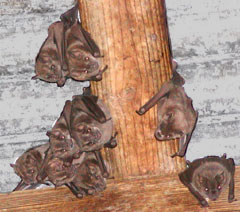 Jamaican Fruit-eating Bats (Artibeus jamaicensis)
|
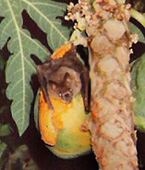 Jamaican fruit-eating bat
feeding on a papaya
This species frequently roosts in
caves, abandoned buildings,
or hollow trees. Jamaican fruit-
eating bats have also been known
to build shelters in which to roost
by biting the mid-ribs of large leaves,
causing the leaves to fold into a
tent-like shape.
|
Originally introduced in the late 1700's for
hunting purposes, whitetail deer have
established small populations on St. Thomas,
St. John, and St. Croix.
The whitetail deer of the Virgin Islands
do not grow as large as their North American
cousins - even though they are members of the
same species. Due to their small size, the
deer can sometimes be confused with goats
at a glance.
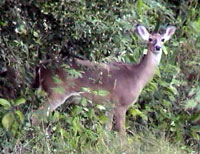 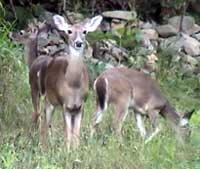 Whitetail Deer (Odocoileus virginianus)
|
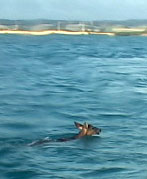 Whitetail deer swimming
Occasionally, they can be seen swimming
in the ocean to nearby smaller islands.
These rare, shy, and gentle creatures feed
on a variety of plants and require patience
and local knowledge to find and observe.
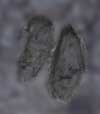 Whitetail deer track in mud
|
The mongoose was originally introduced into the
Caribbean as an attempt to protect sugarcane
crops from foraging rats.
This attempt was unsuccessful, as the sugarcane
pests were tree rats, which feed at night and hide
in trees during the day. Mongooses, however, feed
during the day and don't climb trees. This is not
to say that mongooses never successfully catch
and feed upon tree rats, but the relative infrequency
of this event coupled with the high reproductive and
immigration rates of rats ensured that tree rat
populations thrived.
Mongooses eat a varied diet including small
reptiles, birds, small rodents, insects, some
fruits, and bird and reptile eggs - including
sea turtle eggs.
 Mongoose (Herpestes auropunctatus)
|
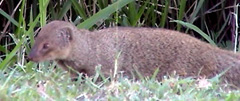 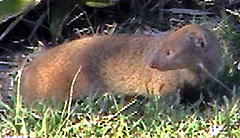 Mongoose (H. auropunctatus)
Mongooses are controversial creatures.
They are interesting and fun animals to
watch, but their introduction has been
ecologically damaging to native reptile
and bird species.
|
Also known as black rats, roof rats, and ship
rats, tree rats are common mammals in the
Virgin Islands.
They can often be found in trees near human
habitations.
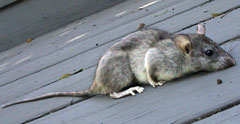 Tree Rat (Rattus rattus)
Originally from Asia, these rats have now spread
to warm climates around the world, becoming
one of the world's most common mammals.
They were inadvertently brought to the Virgin
Islands by the first European settlers.
|
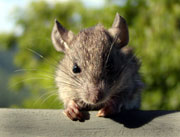 Tree Rat (R. rattus)
Depending on one's viewpoint, rats can be
feared and despised or admired and respected
for their resourcefulness and adaptability.
Tree rats feed on a large variety of foods, including
plant material, bird and reptile eggs, and small
animals. Like the mongoose, tree rats have been
ecologically damaging to native Virgin Islands
species. Norwegian rats (Rattus norgegicus) can
also be found in the Virgin Islands.
|
